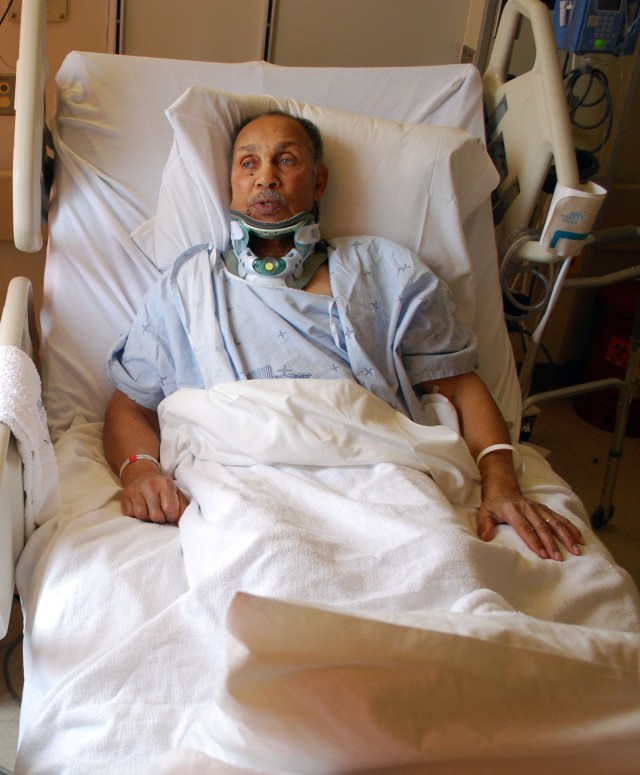As a high school senior in 1944, Edward Drummond thought he would do the patriotic thing after he graduated and join the Air Corps. He was young, enthusiastic and wanted to be a fighter pilot.
But he was also black.
Drummond had read about the 332nd Fighter Group in the black newspapers that served his hometown of Philadelphia at the time.
The 332nd was the first combat group of black pilots to fly in World War II, and he wanted to be like them. He completed the physical tests, the mental evaluations and the dexterity exams. He was told he would hear from someone within 90 days.
He didn't. "I thought they didn't want me in the Air Corps. I thought they were segregationists," Drummond said.
So when his draft card came up, he had a choice to make - Navy, Army or Air Corps.
"I didn't want to go into the Navy because I didn't want to be a mess attendant. And I didn't want to go into the Air Corps because they turned me down. So I chose the Army," Drummond said.
In those days, however, Drummond didn't know it was called the Army Air Corps, and that the two branches operated together. "So I became part of the Air Corps anyway," Drummond said with a smile. He later found out his acceptance into the Army Air Corps was delayed because training for all black pilots was conducted at only one base, Tuskegee Army Airfield in Tuskegee, Ala., as opposed to white pilots, who were trained at a number of different bases.
Integration of military bases was still four years away. "The white pilots could get through training more rapidly. At Tuskegee, they didn't have the room to put more blacks in," Drummond said.
From his hospital bed in Madigan Army Medical Center, now-retired Lt. Col. Drummond recounted his days as a Tuskegee Airman, a term that encompasses all 994 pilots that graduated from training at Tuskegee from 1941 to 1946, as well as all support staff - even the white instructors.
By the time Drummond finished pilot training in 1946, the war had ended, and plans were in place to close Tuskegee. Drummond was sent to Lockbourne Air Base in Columbus, Ohio, another site serving only black servicemembers that had opened in 1942.
Just after he arrived, he was told he wouldn't be staying. "They were having a Reduction in Force since the war was over," Drummond recalled. "They said, 'Don't unpack your bags.' We were second lieutenants, brand spanking-new bars, bright shiny wings, and they wanted to send us home."
But luckily, for Drummond, an obscure regulation surfaced. The regulation stated that officers couldn't be discharged from the service until they had 90 days commissioned service time, and he and his fellow graduates had just been commissioned the day before. "So we were saved," Drummond said.
Then, in 1948, President Truman issued an executive order to integrate the Armed Forces, years before the civil rights movement and public schools were desegregated. With the issue of that executive order, which called for equality and fair treatment of all servicemembers, Drummond got an opportunity to travel overseas to Japan.
He was attached to the 49th Fighter Wing in Idisuki, Japan, and trained to fly the P-80, the first operational fighter jet used by the military. He was one of the first two black pilots to fly the jet during the Korean War, completing 104 missions.
The integration of the military didn't follow him home, though. During gunnery training in Yuma, Ariz., he was refused a beer when he showed up at a bar with some of his white squadron mates. "I'm in uniform, and I'm wearing all my ribbons. The bartender says, 'You've had enough.' I hadn't even had anything to drink. But I got the message," Drummond said.
In 1961, Drummond was assigned to McChord Air Force Base, where he remained until his military retirement in 1970. His career continued through the Vietnam War, where he logged more than 50 hours of total flying time. His public service continued after 1970, when we went to work for the state of Washington for 12 years in the Department of Health and Human Services and the Department of Licensing.
Retiring to Lakewood, Wash., Madigan has been Drummond's health care facility of choice for the past 50 years. He is awed by the advancements and improvements in medical care, appreciates the care and confidence provided by Madigan staff, and was flattered when he received a visit in his hospital room by the hospital commander and his wife, the hospital sergeant major and a hospital chaplain.
"That's feeling from the top," Drummond said.
As the very youngest Tuskegee Airman, he remembers the prejudices against blacks in the military. "Even though the country had treated us as badly as it did, it was still our country," Drummond said. "We were just as happy to go and fight for our country as anybody else and we wanted to do a good job."
But Drummond is proud of the achievements made by black men and women in today's military, and believes the United States has the best fighting force in the world. "We're just a big family. We've got a closeness that will never leave us," Drummond said.


Social Sharing